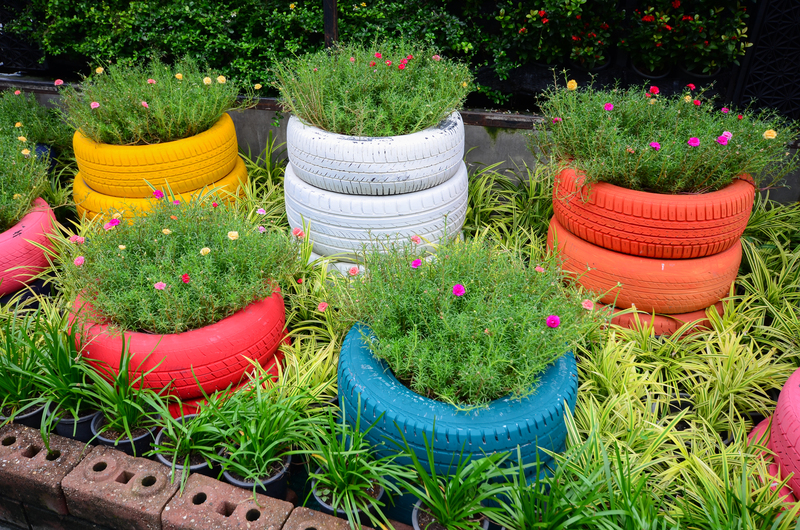Refine Your Recycling Techniques with Guidance for the Home
Recycling is essential in today's world as we seek to reduce waste, protect natural resources, and minimize our environmental impact. However, many of us are uncertain about the most effective ways to recycle at home. Whether you're just starting out or looking to enhance your existing habits, this comprehensive guide will help you refine your recycling techniques with guidance for the home. Discover expert strategies, practical tips, and important insights tailored for households that want to make a difference.
Table of Contents
- Why It's Important to Refine Your Home Recycling
- Know Which Materials Are Recyclable
- Preparation and Cleaning: A Key Step
- Setting Up an Efficient Home Recycling System
- Reducing Recycling Contamination
- Advanced Techniques for At-home Recycling
- Getting the Whole Family Engaged
- Upcycling and Reuse: Going Beyond Traditional Recycling
- Common Recycling Mistakes to Avoid
- Using Local Guidance and Community Resources
- Conclusion: Make Recycling a Lifestyle
Why It's Important to Refine Your Home Recycling
Recycling isn't just about tossing bottles and cans into a bin and hoping for the best. Refining your recycling techniques at home ensures that more materials are properly reclaimed, reducing landfill waste and conserving valuable resources. When done right, home recycling lowers pollution, saves energy, and supports a sustainable circular economy.
According to the Environmental Protection Agency (EPA), the average American generates over 4 pounds of waste per day. Refined recycling methods can help turn a significant portion of that waste into new products, reducing your household's environmental footprint. With just a few adjustments, families can make a big impact.
Know Which Materials Are Recyclable
One of the most fundamental steps to improving your recycling at home is to understand what can and cannot be recycled. Every municipality has slightly different recycling regulations, but here are the most commonly accepted materials:
- Paper: Newspapers, magazines, office paper, cardboard, and paperboard (e.g., cereal boxes).
- Plastics: Bottles, containers, and jugs labeled with recycling symbols #1 (PET) and #2 (HDPE). Some communities also accept #5 (PP).
- Glass: Food and beverage bottles and jars. Some recycling programs accept only clear glass, so check local rules.
- Metals: Aluminum cans, tin cans, and some foil products (clean and dry).
Items that typically cannot be recycled curbside include plastic bags, styrofoam, certain takeout containers, and contaminated materials.
Check Local Recycling Symbols
Always review the recycling symbols on packaging and verify what's acceptable in your area. Visit your city or county's recycling website or call the hotline for up-to-date information.
Preparation and Cleaning: A Key Step
Proper sorting and cleaning of recyclables is crucial. Dirty or contaminated materials can damage recycling machinery or spoil entire batches--meaning nothing gets recycled.
- Rinse food and beverage containers. Ensure they are free of food residue. A quick rinse is usually enough.
- Remove lids and caps. These are often made from different types of plastic than the containers themselves. Check if your program accepts them separately.
- Break down cardboard boxes. Flatten them to save space and make transport easier.
- Do not bag recyclables. Place them loose in your bin unless your municipality directs otherwise.
Proper preparation helps create higher quality recycled materials, ensuring your efforts count.
Setting Up an Efficient Home Recycling System
To refine recycling at home, make it easy for everyone in the household. Here's how to set up a system that encourages participation and efficiency:
1. Designate Clear Collection Points
- Place recycling bins or baskets in key locations--kitchen, office, and garage.
- Use clearly labeled containers for different materials, if your local program requires sorting.
2. Use Visual Reminders
- Attach signs, charts, or infographics near bins to guide proper separation.
- Involve kids with colorful stickers to boost learning and engagement.
3. Schedule Regular Drop-Offs
- If you have to take recyclables to a facility, set a recurring reminder to prevent overflow and keep your system running smoothly.
Reducing Recycling Contamination
Contamination is a major challenge in recycling programs, costing time, money, and resources. Items contaminated with food, grease, or non-recyclable material can result in recyclables being sent to landfill.
To reduce contamination at home:
- Never recycle soiled materials: Pizza boxes, napkins, or paper towels are a no-go.
- Don't wish-cycle: Only place materials you're sure are accepted--when in doubt, throw it out.
- Keep liquids out: Empty bottles and cans before recycling.
- Watch out for tanglers: Hoses, wires, and plastic bags jam machinery and should be disposed of separately or at special collection points.
Advanced Techniques for At-home Recycling
Beyond the basics, you can further refine your recycling practices at home with these advanced tips:
- Compost food waste: Composting isn't recycling in the traditional sense, but it diverts organic waste from landfills. Set up a compost bin for fruit/vegetable scraps, coffee grounds, and yard trimmings.
- Recycle specialty items: Batteries, electronics, and hazardous waste require special handling. Many cities host collection events or offer drop-off sites.
- Participate in mail-back programs: Some companies offer pre-paid mailers to recycle items like ink cartridges and beauty product containers.
- Donate or sell unwanted goods: Give clothing, toys, books, and furniture a second life by donating or listing them for sale before throwing them away.
For a truly sustainable lifestyle, consider the full life cycle of every product you bring into your home.
Getting the Whole Family Engaged
For recycling to be effective at the household level, everyone needs to get involved. Here's how to turn improved recycling techniques into a collaborative family effort:
- Educate children: Teach kids about the importance of recycling and the impact of their actions. Use hands-on activities or games.
- Assign recycling roles: Rotate responsibilities for emptying, rinsing, and sorting items so everyone participates.
- Track progress: Create a family recycling chart and celebrate milestones, such as reducing weekly trash output.
- Share knowledge: Host eco-friendly challenges or invite neighbors to join in, expanding your positive influence.
Early education and active participation lead to habits that last a lifetime.
Upcycling and Reuse: Going Beyond Traditional Recycling
The most effective way to reduce household waste is to prevent it from entering the waste stream in the first place. Upcycling and reusing are creative alternatives that not only help the environment but can also save money and spark joy.
What Is Upcycling?
Upcycling involves transforming discarded items into something new and useful without breaking them down completely, as with traditional recycling. For example:
- Repurposing glass jars as storage containers or vases.
- Turning old t-shirts into cleaning rags or tote bags.
- Using cardboard boxes for arts and crafts or homemade organizers.
- Refinishing furniture instead of throwing it away.
Every item reused or upcycled is one less item headed for landfill!
Simple Ways to Reuse at Home
- Shop with reusable bags: Reduce your need for plastic bags.
- Use refillable water bottles and coffee mugs: Cut down on single-use plastics.
- Hold clothing swaps or garage sales: Extend the life cycle of your belongings.
Common Recycling Mistakes to Avoid
Even the most dedicated recyclers make mistakes. Here are several common pitfalls--and how to avoid them for refined home recycling:
- Bagging recyclables: Unless specified by your local collection, don't bag recyclables; this can lead to entire bags being thrown away.
- "Wish-cycling": Hoping items are recyclable doesn't make it so--if unsure, check the rules!
- Recycling hazardous materials: Electronics, batteries, and chemicals need special disposal.
- Ignoring the need to clean: Failing to rinse containers contaminates batches.
- Placing the wrong plastics: Not all plastics are created equal. Check recycling codes and guidelines.
Avoiding these mistakes improves recycling efficiency and supports better environmental outcomes.
Using Local Guidance and Community Resources
Municipal recycling programs vary in what they accept and how materials should be sorted. Leverage local resources to ensure your refined home recycling techniques are both effective and compliant.
- Find your local recycling guide: Most cities publish an online guide detailing what's accepted.
- Download an app: Some municipalities offer recycling apps that help residents check item recyclability.
- Participate in collection events: Drop off electronics, hazardous waste, and specialty recyclables at community events.
- Connect with neighborhood groups: Join local social media pages or environmental groups for tips and resources.
Staying informed means your efforts truly contribute to a cleaner, greener community.
Conclusion: Make Recycling a Lifestyle
Refining your recycling techniques with guidance for the home is not a one-time fix but a continual process of learning, adapting, and sharing knowledge. By adopting smarter recycling strategies, you become part of a bigger movement toward sustainability and eco-friendly living. From proper sorting and preparation to creative upcycling, every step you take matters.
Begin today by assessing your current practices, involving your family, and making use of local resources. The more you know, the better you recycle. With a little extra effort and attention, you can make your home a model of efficient, effective, and responsible recycling. Start refining your recycling techniques today--because small actions at home add up to big changes for our planet.
Ready to refine your recycling skills at home?
Take the first step by reviewing your local recycling guidelines and setting up an optimized home system today!

